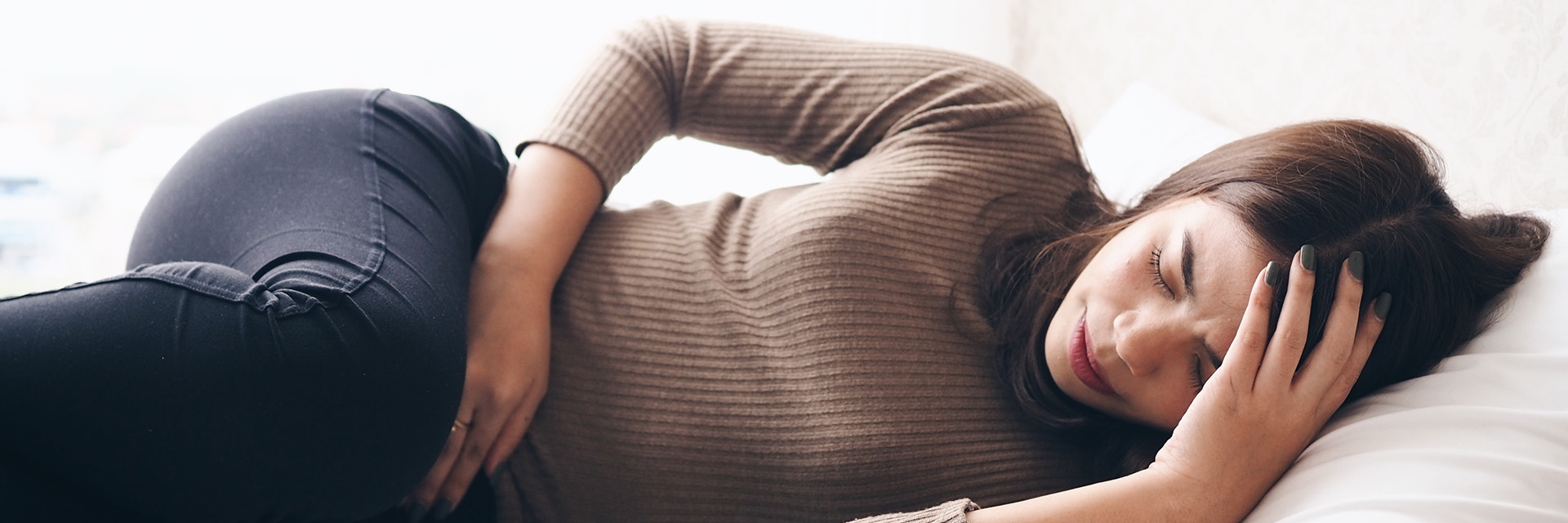If you’re suffering from endometriosis, you’ve probably heard that question frequently — perhaps when you have had to call in sick to work, or have had to cancel plans with friends. You may even wonder if the pain is all in your head.
An awareness of endometriosis will help those suffering understand their treatment options, and help others become aware of what it can look like so they can seek treatment if they believe they may have it. It also helps to understand the difficulties involved with living with endometriosis.
If you have endometriosis, it may be of comfort to know that you’re not alone. The National Institute of Child Health and Human Development (NICHD) reports an estimated 6 to 10 percent of women of reproductive age have endometriosis — about 5 million women in the U.S. — and a 2011 study revealed that 11 percent of those women had no symptoms of the disorder at all.
A worldwide study of the economic costs of endometriosis found that the average woman diagnosed with endometriosis had productivity losses (time away from work) of about $13,048 per year and healthcare costs of about $3,066.
“Total annual burden of endometriosis-associated symptoms varied from $2 billion in Denmark to $119 billion in the United States,” the study said.
What is endometriosis, exactly? Endometriosis happens when the lining of the uterus attaches to other organs outside the uterus. During your period, that lining is shed from the uterus — but if you have endometriosis, the lining attached to organs outside the uterus has no way to slough off. Because of this, the lining is aggravated during ovulation and menstruation, and then can break down and bleed, tear away, or form scar tissue.
How do you know if you have endometriosis? “If you have chronic pelvic pain that is worse on menses, pain with intercourse or having a bowel movement you could have endometriosis,” said Sheri Puffer, M.D., an obstetrician/gynecologist and physician on the medical staff at Texas Health Arlington Memorial. “Also if you are having trouble conceiving.”
And while nobody is certain exactly what causes endometriosis, “one theory is that retrograde menstruation (flow backward through your fallopian tubes into your abdomen) can cause endometriosis,” Puffer said.
The NICHD says risk factors include:
- A woman’s mother, sister or daughter having endometriosis
- Periods that started before age 11
- Short monthly cycles of 27 days or less
- Heavy menstrual cycles that last more than seven days
Risk factors can be reduced if a woman exercises regularly for more than four hours a week, if she started menstruating later than age 11, after pregnancy, and having a low amount of body fat.
“There is not a cure but there are many therapies that can be effective, such as hormonal medication and surgery,” Puffer explained.
The U.S. Department of Health and Human Services (HHS) says treatment almost always begins with birth control. “If you are not trying to get pregnant, hormonal birth control is generally the first step in treatment,” the agency said.
Pain medication is also frequently used to make a woman more comfortable as well.
So, is pregnancy possible with endometriosis?
“Yes, but it can be more difficult as the endometriosis can cause scar tissue formation altering the fallopian tube function,” Puffer said, “but it is possible.”
“If you are trying to get pregnant, your doctor may prescribe a gonadotropin-releasing hormone (GnRH) agonist,” the HSS explained. “This medicine stops the body from making the hormones responsible for ovulation, the menstrual cycle, and the growth of endometriosis.”
While the treatment does cause temporary menopause, it does control the growth of endometriosis, and once it is stopped, the chance of pregnancy is better.
Surgical options to remove the growth are also available.
“Surgery can be done to relieve pain and improve fertility,” the American College of OB/GYN's said. However, those surgeries are not a “cure.”
“After surgery, most women have relief from pain,” the group said. “However, about 40–80 percent of women have pain again within two years of surgery. The more severe the disease, the more likely it is to return.”
And while some say they have had a complete abatement of symptoms after pregnancy, the American Pregnancy Association cautions, “There is no cure for endometriosis, but for some women, pregnancy can lessen the symptoms and effects.”
If you think you may be suffering from endometriosis, talk to your doctor about diagnosis and treatment options.


